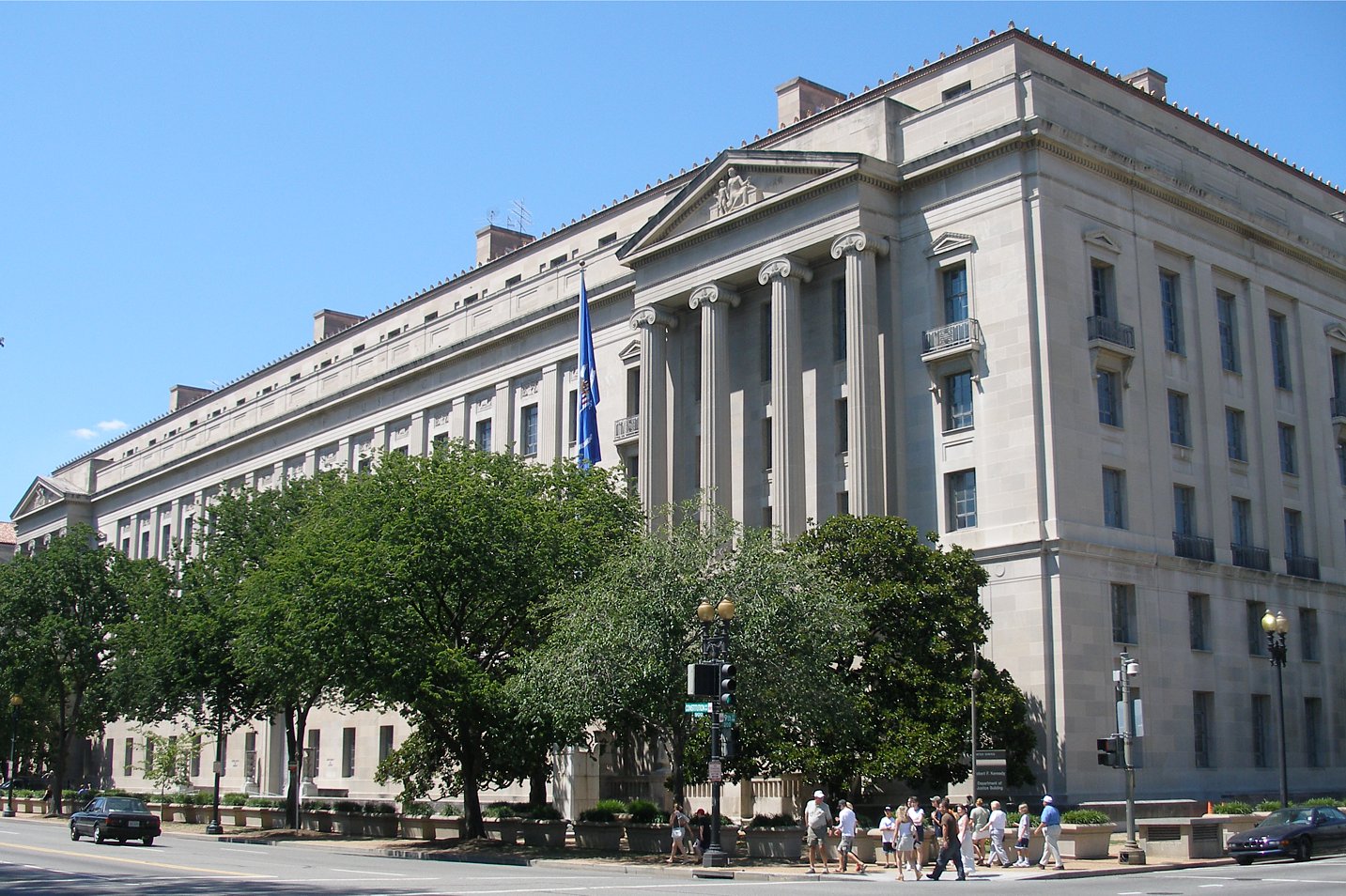Interview: Preventing Gang Violence in Central America
This past year, Congress allocated $750 million to Central America for the Alliance for Prosperity in the Northern Triangle, one of the many approaches for tackling the region’s security crisis and subsequent migration crisis. (You can read more about the U.S. policy response in this previous post.) This influx of money will be largely used to expand existing aid projects in Central America with a focus on improving security and economic conditions.
Published by The Lawfare Institute
in Cooperation With

This past year, Congress allocated $750 million to Central America for the Alliance for Prosperity in the Northern Triangle, one of the many approaches for tackling the region’s security crisis and subsequent migration crisis. (You can read more about the U.S. policy response in this previous post.) This influx of money will be largely used to expand existing aid projects in Central America with a focus on improving security and economic conditions.
But what does this actually mean? To get a sense of what this money could look like on the ground, I spoke with Enrique Roig, the former Central America Regional Security Initiative (CARSI) coordinator at USAID from 2010 to 2015 and current Director of the Citizen Security Practice at Creative Associates International. Not only has he watched regional violence prevention aid evolve over time, he also has the front row view on what’s gone right and wrong and where we should be improving. Spoiler alert: it’s all about the big data.
***
Q. What are the types of violence prevention programs that you’ve helped develop and implement in Central America, and how have they changed over time?
Enrique Roig: I first started working on violence prevention in Central America in 2005. At the time, the State Department and the Bureau of International Narcotics and Law Enforcement Affairs (INL) were supporting mostly law enforcement efforts and anti-gang legislation. I was a researcher for a USAID gang assessment and we recommended that USAID invest more on the soft side: how to work with at risk youth to keep them from getting involved in violence and the gangs. 
One of the first programs was in Guatemala with youth outreach centers, providing a safe space for youth to show up during the day and have access to different activities and mentors. Mainly it was about setting them up in areas that were considered to be hot spots and that program really took off. There was also a component of working with former gang members and an outreach campaign to sensitize the public about second chance opportunities for these kids.
Over the last five years, these programs’ sophistication picked up significantly in the region. The programs began to incorporate more evidence-based crime and violence prevention models, and data began to become more prominent in the design and implementation of the programs, and so did the idea of hot spot mapping and trying to zero in on specific neighborhoods—the types of things that we do in the United States. USAID even partnered with the City of Los Angeles to field test new tools and interventions aimed at targeting Central American youth who are prone to gang involvement.
I also tried to increase the collaboration with INL so that we could start designing programs that were law enforcement plus prevention. This became the “place based strategy,” which is now the U.S. government mantra for how to do these programs in the region. We need to focus on places, people, and behaviors in order to address violence.
I also spent a lot of time trying to promote the idea that we had to work with former gang members. There was a lot of resistance to that idea in the U.S. government, mainly from law enforcement. I tried to demonstrate that we needed to target the core offender group because they are the ones going back into the communities and committing most of the crimes: 0.5 percent of core offenders commit around 70 percent of the crimes in hot spot neighborhoods. So programs in Central America had to do a better job of getting to that group.
Q. Do you use the same approach for each of the Central American countries?
A: There are core activities that transcend culture and local context and that have to be applied across the board. One is setting up the convening platform—meaning the local committee or whatever form that it ends up taking—to bring together the stakeholders at the local and national level.
Data collection and risk diagnostic tools are also key everywhere. You have to know if this is an individual that just happens to live in a bad place and will never join a gang, because they have a strong family, strong support network, and are not into drugs. Or is this a kid who has all of those risk factors, is easily influenced by peers, lives with the grandmother since the parents are in the United States, and is a compulsive risk taker, these types of things.
Yet the programs that work with at risk youth will obviously depend on the cultural context. For example, in Guatemala you have a much larger indigenous population versus in El Salvador, where it is more homogenous, urban, and with a higher presence of gangs and violent confrontations between police and gangs. In these countries, you might have to do things differently with, for example, how you work with former gang members.
There is also the policy piece. How do you get governments and the private sector to invest in these violence prevention programs? The default is always to want to send the police in and to go after the bad guys and that creates confrontations with the community. Constructing more trust between the police and communities is the only way that you are going to get people to report crimes and cooperate. And that’s different for each country. For example, the police force in Honduras might have a bit more public confidence than what you would find in El Salvador.
Q. What are the biggest obstacles that you have faced in implementing these programs?
A: The biggest challenge is always coordination. It’s cliché, but it’s true. You have the U.S. government and all the bureaucracies within the U.S. government, then you’ve got the host government and all of their various ministries, and then you might have the Interamerican Development Bank (IDB), the World Bank, and the Europeans. And that’s just at the macro level. When you go to the micro level, you have got all kinds of other stakeholders.
The advantage of being an outsider is that you get to talk to a lot of people, and it always surprises me that a lot of these people on the ground haven’t talked to each other. They are doing their work but it’s somehow not transcending because there isn’t that coordination.
There have been a lot of attempts to try to improve this, with some limited success. When I was at USAID, the State Department was working with the Central America Integration System that brings all the countries together. There was a security forum that was established and they were collecting information from all the organizations about what they were doing and where. But at the end of the day, that kind of broke down because of politics.
We also tried to overcome this through conferences, workshops, and high-level dialogues. It can be a long and tedious process, but it’s important for sharing the good, the bad, and the ugly for dealing with high levels of insecurity.
Also, sometimes there are unrealistic expectations about what you can do for not large sums of money. It looks big on paper—$750 million for Central America—but when you are actually doing these programs on the ground, it might be only $25 million over five years to try and reduce the homicide rate. When you are one program in a sea of many external factors, then you need to take that money and link it up to what the government is doing or what the IDB is doing, to have greater impact.
In an ideal world, you would have prevention, enforcement, and rehabilitation all working in one place. That doesn’t really happen, even though we talk a good game. But we are moving in that direction. The political buy-in is there, but now comes the hard part of implementation, which everyone assumes can happen overnight.
Q. How does doing this type of work compare to the other work that you’ve done around the world?
A: Colombia is easy to look to given its experience with conflict and high levels of violence. Take Cali for example. When Rodrigo Guerrero became the city’s mayor in 1992, the assumption was that a lot of Cali’s violence was related to drug trafficking. He wanted to test that assumption, so he set up the crime observatory to have data and to do analysis.
It turned out that a good deal of the violence was related to primarily young, intoxicated males who were leaving the bars between the hours of 12am and 3am and had easy access to guns. Once he had that information, Mayor Guerrero was better able to deploy the police to those hotspots and he also established the Ley de Zanahoria that closed bars at a certain hour. That reduced violence in Cali by 30 percent. Data and coordination can really have an impact.
Colombia has a lot of great lessons like that, but there are many differences. Colombia is a richer country and has a higher level of education and capacity than what you might find, for example, in Honduras. Colombia’s police force is more established and—while they have their issues—they probably enjoy a higher level of trust than you might find in Central American countries. Colombia also has political will to look at things like rehabilitation, as they have demobilized various armed groups over time—M19, AUC and now the FARC—and understand its importance.
Whereas in El Salvador, when the truce discussion was going on, there was so much resistance and eventually that whole process fell apart. If the Colombians are willing to negotiate with the FARC, why isn’t the government of El Salvador having a conversation with the gangs? If talking works to de-escalate violence, then why not try. We are often quick to make conclusions that certain things won’t work.
Q: What advice would you give for those coordinating the latest installments of U.S. security assistance arriving in Central America?
A: I would say: speed up the process of turning $750 million into actionable, evidence-informed programs that can be implemented in real time. But this is easier said than done given bureaucracies that must design programs and then run them through a competitive solicitation process. USAID and INL need more people to move this money, as staff are already at full capacity and working overtime. Without increasing the numbers of staff and shortening procurement times, it will be hard to spend this new funding at the expected levels and to quickly address the dire security situation in Central America.




